FAQs Edge AI & AI Engineering Services
What is Edge ai?
Edge AI (also called AI at the edge) refers to running AI-inference and sometimes model training on devices located close to the data source (for example embedded systems, robotics, sensors, industrial controllers), rather than relying entirely on cloud or data-center processing. It reduces latency, improves privacy, and often improves reliability in disconnected or bandwidth-constrained environments.
Why should I use Edge ai instead of cloud-only ai?
The main advantages of Edge ai:
- Lower latency (because data doesn’t travel far)
- Improved privacy and data sovereignty (data stays local)
- Reduced bandwidth and cloud cost (less data transfer)
- Increased reliability (can operate even when disconnected)
What are typical use-cases for edge AI?
Use cases include: robotics vision, autonomous vehicles/AMRs, real-time quality inspection in manufacturing, predictive maintenance on industrial equipment, embedded IoT devices for smart cities or retail, healthcare monitoring devices.
What hardware is typically used for Edge ai?
Edge AI hardware includes embedded GPUs, NPUs, TPUs, FPGAs, microcontrollers (for very low-power), systems-on-modules (SOMs), carrier boards and ruggedized enclosures. Selection depends on compute, power, thermal, and form-factor requirements.
What is the difference between inference and training in Edge ai?
- Training is the process of building or updating an AI model (often done in the cloud or on high-performance hardware).
- Inference is running the trained model to make predictions / decisions in real time. Edge deployments usually emphasize inference (and occasionally on-device fine-tuning) due to resource constraints.
What is an AI engineering service?
- AI engineering services refer to the set of professional offerings around designing AI systems: data acquisition, model design and training, optimization (quantization, pruning), deployment and integration (especially at the edge), monitoring, retraining, lifecycle management, and integration with hardware platforms.
What is meant by “bring your own model” (BYOM) at the edge?
- BYOM means you provide your trained AI model (for example a vision classification or object-detection model) and the engineering service (or edge platform) integrates that model into the hardware stack, optimizing and deploying it on the edge device (carrier board / module / embedded system).
How do I decide whether to deploy the model at the Edge or in the cloud?
Key considerations: latency requirements (millisecond responses favour edge), connectivity/reliability (edge better if intermittent), privacy/security (edge better if data is sensitive), cost and bandwidth (edge reduces data transfer), scalability and management (cloud easier for many devices). Also hardware cost, power budget, and maintenance overhead matter.
What is hardware-software co-design in Edge ai?
Hardware-software co-design is the practice of designing the hardware (compute, memory, IO) in conjunction with the software (AI model, inference framework, optimisation) so that the overall system is efficient, low-power, and meets performance/latency goals. This is especially important in edge AI systems.
What are common constraints in Edge ai deployments?
Some constraints: limited compute and memory resources, power/thermal limits, latency budgets, storage/flash limits, connectivity issues, hardware heterogeneity, security requirements, model footprint size
What is model quantization and why is it important for Edge ai?
Model quantization is the process of converting model weights (and/or activations) from high precision (e.g., float32) to lower precision (e.g., int8, int4, even binary) to reduce memory footprint, inference latency and power consumption – very relevant for Edge devices.
What is model pruning and when do I use it?
Model pruning is the removal of less important or redundant weights/neurons from the neural network, which reduces size and compute, and helps fit the model onto a constrained Edge module.
What is knowledge distillation?
Knowledge distillation is a technique where a large “teacher” model is used to train a smaller “student” model that meets the constraints of the edge device, often with similar performance but much smaller footprint.
What is the AI stack in edge AI engineering?
The AI stack consists of layers: hardware layer (modules, boards, enclosures, like Connecttech.com's Gauntlet), middleware/firmware (CUDA, TensorRT, ONNX Runtime, device drivers), model layer (trained AI models), and deployment/inference layer (edge runtime, scheduling, orchestration). Effective edge AI engineering works across all layers. Check connecttech.com & CTaiLABS.ai for more info.
What is the role of edge AI orchestration or lifecycle management?
After deployment, edge AI systems need monitoring, model versioning, OTA updates, retraining to handle model drift, scaling across many edge devices, ensuring reliability and security – i.e., a lifecycle management process.
How do I measure performance of an edge-AI deployment?
Metrics include inference latency (ms), throughput (fps or inferences/sec), accuracy (precision/recall), power consumption (W or mW), memory usage (RAM/flash), thermal behavior (temperature), model size (MB), deployment yield and reliability.
What is the difference between edge device, fog, and cloud?
- Edge device: the device where data is generated and inference/processing happens locally.
- Fog: an intermediate layer near the edge (e.g., local gateway, micro-data centre) that aggregates and processes data before sending to cloud.
- Cloud: centralized data centres providing large compute/storage and long-term analytics.
Can edge AI work offline?
Yes — a key benefit of edge AI is that inference can run locally even without network connectivity, making the system resilient and low-latency. Book a Demo at CTaiLABS.ai
What types of models are suitable for Edge deployment?
Models that are efficient in compute, memory and power. Examples: lightweight convolutional neural networks tiny ML models for microcontrollers, object-detection models pruned/quantized, anomaly-detection models for sensor data, hybrid models combining rule-based and ML.
What is an embedded GPU or NPU in Edge AI hardware?
An embedded GPU or NPU (neural processing unit) is a specialized hardware accelerator built into an edge device, designed to run AI inference workloads efficiently in terms of speed and power. See Connecttech.com for all of your hardware needs.





